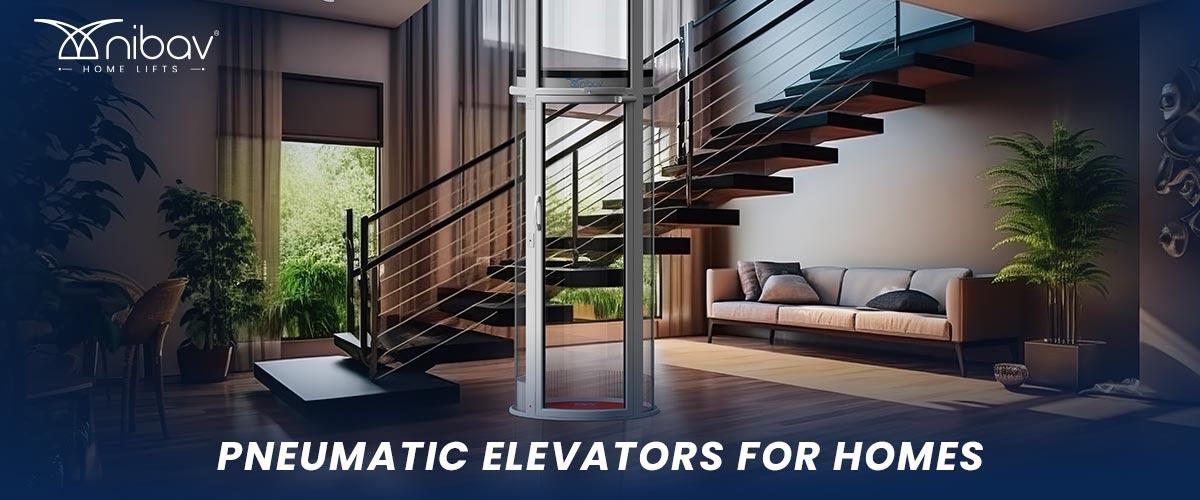Choosing the right type of elevator for your home is a significant decision that can affect not only the efficiency and style of your home but also the long-term value and ease of use. In the realm of residential elevators, pneumatic and hydraulic systems stand out as popular options, each with unique features and benefits. This article, presented by Nibav Home Lifts UAE, will explore these two systems to help you make an informed decision for your home.
Understanding the Basics
Before delving into the specifics, it’s crucial to understand what pneumatic and hydraulic elevators are and how they operate.
Hydraulic Elevators
Hydraulic elevators are powered by a piston that moves inside a cylinder. Hydraulic fluid is pumped into the cylinder to move the piston and lift the elevator car. When the elevator needs to descend, the fluid is released back into a reservoir. This system is known for its reliability and smooth operation, making it a preferred choice for many residential buildings.
Pneumatic Elevators
Pneumatic elevators, also known as vacuum elevators, operate on a completely different principle. They use air pressure to lift and lower the cabin. By creating a vacuum above the elevator car and atmospheric pressure below, the cabin moves upward. To descend, the air pressure is equalized. These elevators are known for their sleek, compact designs and require less machinery space than hydraulic models.
Installation and Space Requirements
When it comes to installation, both systems have distinct requirements that could influence your choice depending on the available space in your home.
- Hydraulic Elevators require a separate machine room for the hydraulic pump and fluid reservoir. This can be a challenge in smaller homes or in situations where space is at a premium. However, they can be installed in buildings without requiring substantial modifications.
- Pneumatic Elevators are self-contained units that do not require a separate machine room. This makes them ideal for homes with limited space. Their installation is generally quicker and less invasive, as they come in prefabricated sections that are easy to assemble and install.
Performance and Efficiency
Performance is a critical aspect of any home elevator system, with efficiency playing a key role in ongoing operational costs.
- Hydraulic Elevators are known for their smooth and stable ride. They can handle more weight and larger cabins than pneumatic elevators. However, they tend to use more energy due to the power needed to operate the hydraulic pump, especially when moving upwards.
- Pneumatic Elevators are more energy-efficient on the descent, as they use gravity and do not require electricity to go down. However, their upward movement requires significant energy to create the vacuum, making them less efficient than hydraulic systems when lifting.
Cost Considerations
Both initial costs and long-term maintenance expenses are important factors to consider when choosing an elevator type.
- Hydraulic Elevators generally have a lower initial installation cost compared to pneumatic systems. However, they may incur higher maintenance costs over time, primarily due to the need to change hydraulic fluids and maintain various mechanical parts.
- Pneumatic Elevators tend to have a higher initial cost because of their advanced technology and aesthetic appeal. However, they typically have lower maintenance costs as they have fewer moving parts and do not require hydraulic oil changes.
Aesthetic and Design Flexibility
Aesthetics can also play a significant role in choosing an elevator, especially for a home setting.
- Hydraulic Elevators offer a traditional look and are often customizable in terms of cabin designs and materials. They can blend well with the interior design of your home.
- Pneumatic Elevators have a modern, futuristic appearance with a transparent cylindrical shape that can serve as a visual highlight in your home. They offer panoramic views as you travel between floors, which can add a unique element to your home’s design.
Conclusion
Both pneumatic and hydraulic elevators have their advantages and disadvantages, and the choice often comes down to personal preferences and specific home needs. Hydraulic elevators are ideal for those looking for a cost-effective, traditional option with higher lifting capacity, while pneumatic elevators are perfect for those seeking a modern, space-efficient system with lower long-term maintenance.
At Nibav Home Lifts UAE, we understand that choosing the right elevator is a critical decision. We are dedicated to helping you find the best solution that fits not only your home’s architectural style but also your budget and lifestyle needs. For more information or to schedule a consultation, visit us at Nibav Home Lifts UAE. Let us help you elevate your home’s style and functionality with the perfect lift solution.
